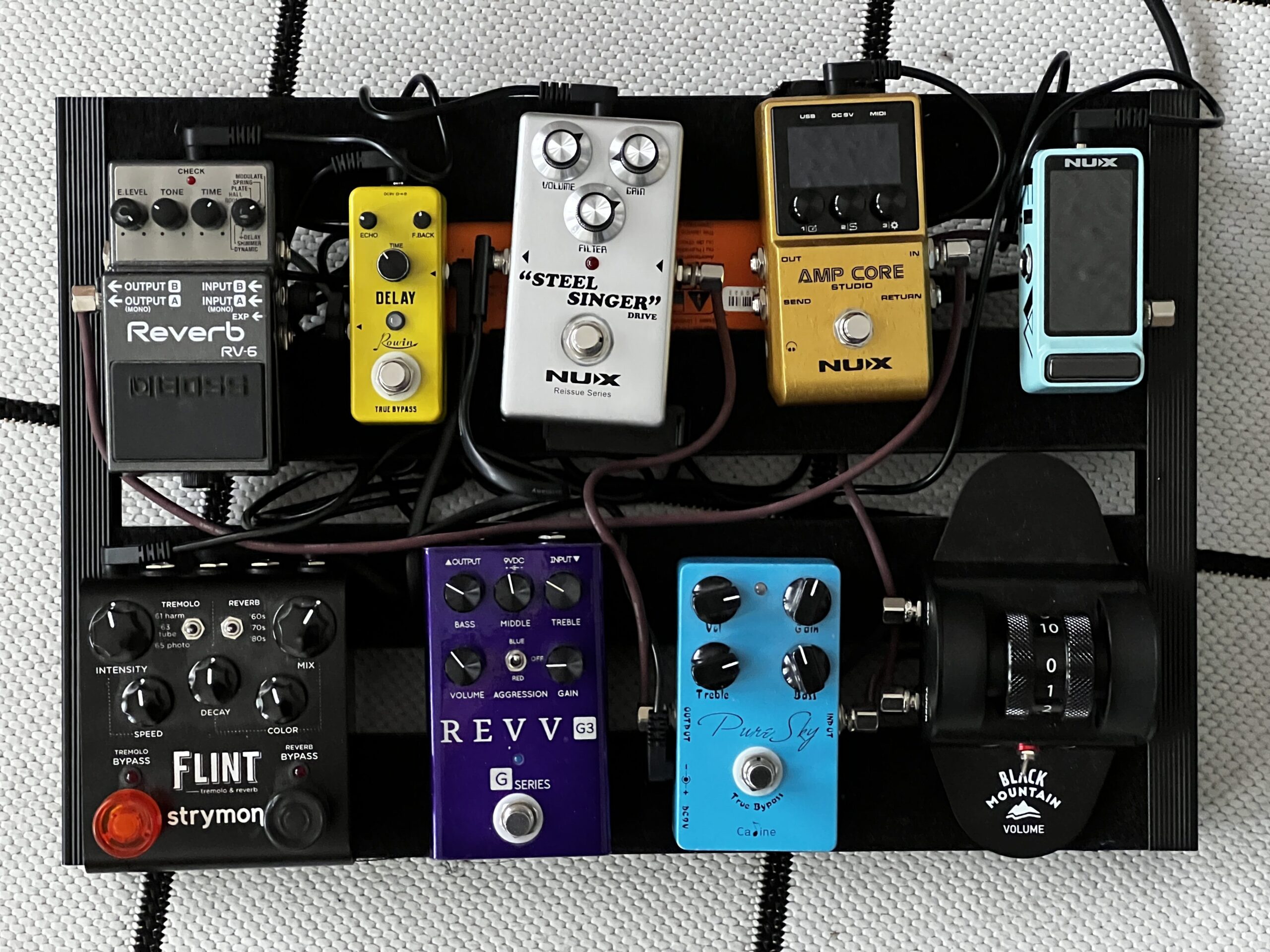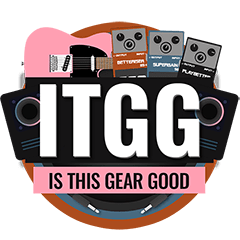Disclaimer: NUX provided this pedal to me, and I got to keep it after the content was published. However, the company has no influence over the things I mention in this post or the video.
Features
– 26 legendary amp models packed into a compact, pedal-sized form factor.
– TS/AC-HD (White Box) amp modeling algorithm delivers authentic amp feel with ultra-responsive playability.
– Cabinet IR resolution with support for third-party IR loaders (33 built-in IRs and 12 empty slots for custom IRs).
– 3 Scene Modes allow seamless switching between different amp tones in real-time.
– Built-in Noise Gate (NG), EQ, Patch Level (P.L.) adjustment, and Send/Return (S/R) function for versatile sound shaping.
– Send/Return loop to easily integrate your favorite effect pedals.
– Ultra-low latency of 1.2ms.
– Wide dynamic range of 110dB for superior sound quality.
– 48kHz/32-bit high-precision processor for crystal-clear audio performance.
– Comes with AMP CORE STUDIO software for advanced sound editing and customization.
Specifications
– Sampling Frequency: 44.1KHz
– AD converter: 24bit
– Signal Processing: 32bit
– Frequency Response: 20Hz-20KHz
– Noise Leve: -100dBu
– Dynamic Range: 108dB
– Power Consumption: 110mA-120mA
– Input: IN, RETURN
– Output: OUT, SEND, PHONES
– Display: TFT color LCD display
– Power: 9V negative tip power adapter
– Dimensions:122mm(L)*72mm(W)*48mm(H)
– Weight: 264g
FIRST IMPRESSIONS
Unboxing the Amp Core Studio gave me that familiar, high-quality feel I’ve come to expect from NUX products—from the packaging to the manual, everything felt above average. Since the pedal supports MIDI and can connect to your computer via USB, it even ships with both cables.
The pedal feels solid and well built, and I have no hesitation stomping on it. I was eager to plug it in, and I was quickly greeted by a colorful, high-resolution display that takes this stompbox to the next level.
HOW DOES IT WORK
NUX has kept the pedal relatively simple while making it versatile enough for the Amp Core Studio to be the centerpiece of your studio or live pedalboard. Here’s how:
Desktop Editor: If you want to tweak your sound even further, the desktop editor not only allows for tone adjustments but also lets you add your custom impulse responses to the pedal.
Preset Slots: There are 20 preset slots, and within each slot, you can store up to 3 different amp and cabinet combinations.
Scene Switching: Use the footswitch to toggle between the 3 different scenes, instantly changing your tone.
Customizability: Each scene can feature completely different amp and cab combinations, and in my experience, switching between them is very fast. Each combination also supports its own custom EQ and effects loop settings.
IS IT EASY TO USE?
While I’m impressed with how much NUX managed to pack into this unit, there is a bit of a learning curve before you can create tones on the fly. To access certain options, you need to press several knobs in the right order. In my initial attempts, I found myself getting lost trying to navigate to the amp reverb adjustment page.
The good news is that the manual answers all your questions, and soon I was adjusting the reverb and mic placement with ease.
HOW DOES IT SOUND?
While exploring the presets, I found that the tones ranged from decent to really good. All the classic tones are here—with even some high-gain amps and one bass amp included. The presets are designed to sound impressive on their own, which sometimes resulted in a bit too much low end on certain tones. Fortunately, the tone controls were just a few clicks away, allowing me to tweak the sound to my liking quickly.

CENTER OF YOUR PEDALBOARD?
While working on this article, I had a worship band rehearsal scheduled and decided to test the Amp Core Studio as the central amp solution for my pedalboard. I typically prefer a clean (or clean-ish) amp and then use various overdrive pedals for different gain stages. For my worship rigs, I usually opt for a more vintage approach and, for example, avoid using an effects loop—something I did with this setup as well.
I dialed in the tones in my home studio and headed to the rehearsal space later that evening. I was prepared to spend some time fine-tuning my tones, but to my surprise, I didn’t have to. I had set up a Deluxe Reverb-type amplifier as my pedal platform and was using several different overdrive pedals. It worked great. After the first song, I only needed to reduce some of the low end from the amp model, and then I could focus on playing with the band.
The Amp Core Studio also performed well at louder volumes, and my bandmates seemed pleased with the tones I was getting.
IS THE NUX AMP CORE STUDIO GOOD?
I find the Amp Core Studio impressive. Its user interface takes the traditional stompbox-sized pedal to a whole new level, and I can easily see the company releasing more products like this in the future—perhaps a reverb or a delay pedal of similar size. Sign me up!
The amp tones range from decent to great, and you can further enhance them by uploading your own impulse responses into the device. With three scenes per preset, it should cover the needs of many guitar players. However, it also makes me wonder if something similar—but even larger—is in the pipeline.
Overall, I found the Amp Core Studio to be a good-sounding amp simulator that won’t break the bank. The user interface goes well beyond what you’d expect from a compact pedal amp simulator. I wouldn’t call it the best-sounding amp simulator out there, but with a bit of tweaking, I was able to achieve tones that worked really well with my band.
Learn more about Amp Core Studio Here: https://www.nuxaudio.com/ampcorestudio.html

Leave a Reply